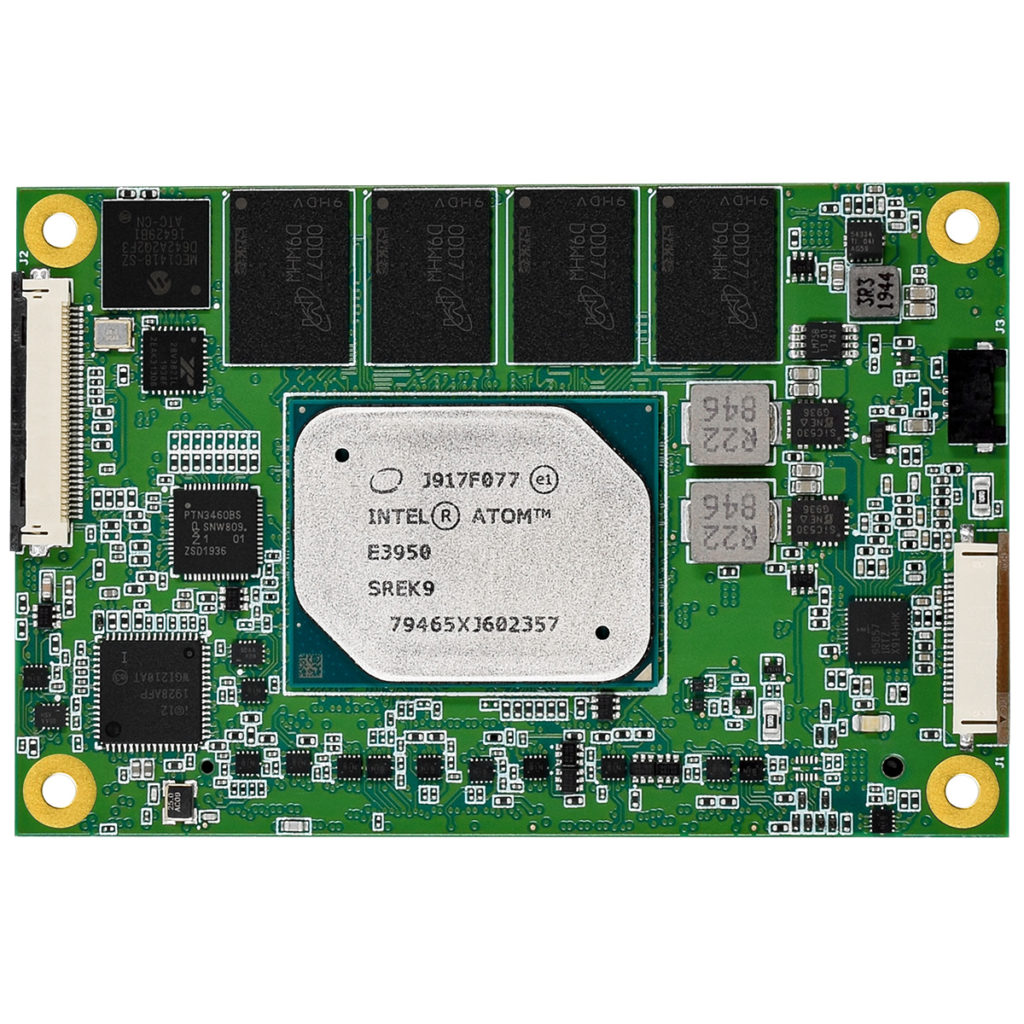
Part 2: COMs Offer a Simple Path to Higher Functionality
In my last blog, I wrote about single-board computers (SBCs), their origins, where it makes sense to use them, and even included an example of a great SBC. Here, I’ll do the same for computer-on-modules, or COMs, and highlight some of the differences between the two architectures.
The biggest difference is that the SBCs can stand on their own and act as fully functional computers, not needing any other boards attached. If you just need common functions, like Ethernet, video/graphics, and standard I/O, you’re likely all set with the SBC. Among many vendors offering great products, WINSYSTEMS is a leading U.S.-based provider of rugged and highly reliable industrial SBCs.
As OEMs try to solve unique application challenges, they often have unique I/O requirements not supplied by a commercial off-the-shelf (COTS) SBC. That’s where the COMs come into play, as they generally add some specific functionality to a system. That’s not always the case, but it’s the majority and the generally accepted definition of a COM.
Note that COMs are not the only way to add that specific functionality, but for simplicity’s sake, we’ll stick to that definition here and take up other alternatives in a future blog. COMs started gaining popularity in the early 2000s with several standards being adopted. This includes, but is not limited to:
Today there are two main standards committees for COM and (system-on-modules, or SOMs) and several vendors with proprietary offerings. Those standards bodies are PICMG and SGeT. Like many industry specifications, the COMs standards continue to evolve. The most prominent evolution on the horizon is PICMG’s COM-HPC spec.
This soon-to-be-ratified specification is aimed at high-performance COMs. The pinout and majority of the functionality of the spec were recently officially approved. Final PICMG ratification of the specs is expected by the end of the year. What has been approved is the COM-HPC physical footprints and pinout. First products that comply with the spec are expected immediately after ratification.
COMs Origins
The approach taken to COM design is built off of earlier standards-based concepts. It provides an approach to CPU modules and standard I/O and bus interfaces so that custom carrier cards can be developed by OEMs and third-party design firms that specialize in various industries.
Due to some clear advantages for OEMs that typically operate in the “medium volume” range, COMs have experienced substantial growth lately. And because they are available from many vendors, the “single-source” issue goes away, removing a potential barrier to entry for systems integrators.
However, having modules available from multiple vendors can be a double-edged sword. For example, a considerable portion of each COM Express specification is optional. Hence, if an OEM designs around these optional interfaces, there may or may not be other COTS COMs that employ all the same interfaces.
In addition, BIOS and firmware support can vary across vendors. Most of the primary elements will be very similar, but if BIOS customization is required to connect to the carrier board, any change will require going through the customization process again on another vendor’s module. So you could make the argument that the single-source issue still applies here. The bottom line is that OEMs must go into these designs with eyes wide open.
Moving Up or Down the Performance Ladder
On the plus side, scalability can be achieved within a COM family using different microprocessors that fit that same form factor and bus type. Specifically, the OEM gets access to a family of CPU modules from the same vendor with different processors (from the same family) with various RAM configurations. The result is an upgrade or value path for OEMs.
While future-proofing isn’t always possible, the evolving COM specifications can provide access to future CPU options when a product goes end-of-life (EOL). Even if the carrier board has to be modified, it is far easier to modify a custom carrier board with specialty I/O than designing around a new CPU on a custom design.

One example of a COM that offers industrial functionality is the WINSYSTEMS COMeT10-3900. With its Intel Atom E3900 microprocessor, the module offers lots of memory, I/O, and processing capability.
An example of a feature-rich COM is the WINSYSTEMS COMeT10-3900 industrial COM Express Type 10 Mini module. Designed with an Intel Atom E3900 processor, this low-power industrial module offers a rugged design with a -40ºC to +85ºC operating temperature range and a wide input voltage range (4.75 to 20 Vdc). Other features include up to 8 Gbytes of LPDDR4 2400-MT/s system memory, an Intel low-power Gen9 graphics engine, and full-HD and 3D graphics acceleration.
